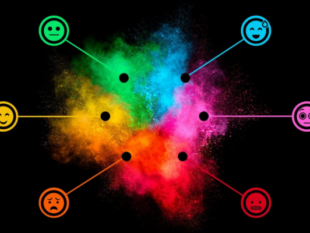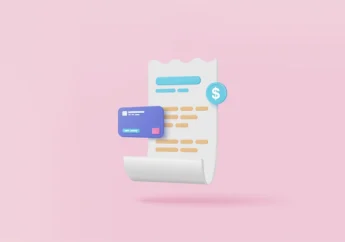AI-Enhanced Chatbots and Their Impact on Customer Service in Fintech
by Mashum Mollah Technology 05 September 2024

In the rapidly evolving landscape of financial technology (fintech), customer service has emerged as a critical differentiator for companies striving to gain a competitive edge. As consumers demand more personalized and efficient interactions, integrating artificial intelligence (AI) into customer service platforms has become increasingly prevalent.
Specifically, AI-enhanced chatbots, powered by NLP and ML, have completely changed how fintech companies engage with their customers. These intelligent virtual assistants are not only streamlining customer support but also enhancing user experiences by providing instant, accurate, and contextually relevant responses.
This article explores the transformative impact of AI-enhanced chatbots on customer service within the fintech sector, highlighting their benefits, challenges, and future potential.
AI Chatbots in Fintech: Current State and Numbers

Recent studies show that AI-based customer support chatbots provide financial institutions with about $8 billion in value at the moment, about $70 per interaction. In addition, approximately 88% of customers reported having at least one conversation with a chatbot in the last year. This indicates a significant level of engagement and acceptance among users.
However, the effectiveness of these chatbots is not without debate. While 21% of customers fully trust AI-driven chatbots, 56% remain neutral, reflecting a cautious approach toward this technology. This ambivalence shows the need for fintech companies to keep refining chatbot interactions to build greater trust among users.
Key Benefits of AI-Powered Chatbots

In addition to increasing customer satisfaction, AI-powered chatbots offer several other benefits to fintech companies. These are as follows:
Cost Reduction
Through immediate replies to routine inquiries and handling of many customer queries, chatbots reduced the human customer service staff. This has led to an estimated cost saving of around 30%.
Slick Customer Experience
Customers can engage in transactions, check their balances, or make financial decisions through the AI chatbots 24/7 without real people. For example, Bank of America customers interact with Erica, its virtual assistant. Erica assists customers in checking credit score tracking or redemption of reward points.
Faster Operations
AI chatbots free up human agents to focus on more complex queries. This division of labor allows financial institutions to provide faster and more efficient service. For example, Capital One’s chatbot, Eno, helps customers with fraud alerts and transaction confirmations.
Enhanced Data Analysis
Chatbots can collect and analyze customer data in real-time, providing valuable insights into customer behaviour and preferences. This data can be used to improve services and tailor marketing strategies.
Scalability
Chatbots can be scaled to handle an increasing number of customer queries and provide instant personalized advice after analyzing customer data. At the same time there is no corresponding increase in operational costs or human resources.
Limitations of AI-Powered Chatbots

Despite all the benefits, AI-enhanced chatbots face several challenges that limit their effectiveness.
Trust Issues
Trust remains a significant hurdle. The fact that only 21% of finance customers fully trust chatbots highlights a broader concern about relying on AI for critical financial services. This lack of trust can hinder the widespread adoption, as customers may prefer interacting with human agents for sensitive matters.
Cultural Adaptation
Some customers do not feel comfortable with AI-powered chatbots, especially in cultures that cherish face-to-face conversations. Chatbots need to be culturally sensitive to overcome this barrier.
Handling Complex Queries
Chatbots excel at handling routine inquiries. However, they may disregard critical thinking when it comes to more complex scenarios. Customers may get infuriated by the chatbot’s inability to deliver what is expected.
Challenges Faced by Fintech Companies While Implementing Chatbots
In addition to the above-mentioned limitations, Fintech companies also face other challenges while implementing AI-powered chatbots. These are as follows:
Integration with Existing Systems
Seamlessly integrating chatbots with existing banking systems and databases can be technically challenging. However, this integration is necessary to provide accurate and real-time responses to customer queries.
Natural Language Processing (NLP) Limitations
While NLP technology has advanced, it still struggles with understanding context, slang, and regional dialects. Consequently, this can lead to misunderstandings and frustration for users.
Regulatory Compliance
Fintech companies must navigate a complex landscape of regulations and standards, such as PCI DSS (Payment Card Industry Data Security Standard). Compliance with these regulations is crucial to avoid legal repercussions and maintain customer trust.
Real-World Case Studies
In this section, we have provided you with some real-world case studies demonstrating the impact of AI-powered chatbots on the fintech industry.
BNP Paribas Cardif’s Cardi Bot
BNP Paribas Cardif introduced a voice assistant, Cardi. The chatbot provides information on how to get payouts and responds to common queries. Subsequently, over 2 years, Cardi Bot saved the company over $9 million in operational costs.
Wells Fargo’s Fargo Assistant
The Wells Fargo virtual assistant started in March 2023 and reached 20 million engagements by January 2024. GenAI powers this chatbot and can perform bill payment and transaction information.
JPMorgan’s IndexGPT
JPMorgan is currently building a GenAI model IndexGPT that will provide required securities to customers. It should be capable of dispensing investment advice by employing the principles of a financial advisor without a human professional.
Future Trends and Developments
As AI technology continues to evolve, the AI-powered chatbots in fintech are expected to expand further.
Hyper-Personalization
Many AI-embedded chatbots will continue to deliver highly individualized customer service. These chatbots can acquire customer data and history and modify their responses and recommendations according to customer behaviour.
Predictive Analytics
Another application of AI-powered chatbots will be the use of analytical data to predict the needs of the client and come up with proactive solutions. For instance, a bank’s chatbot might analyze a client’s spending patterns and suggest how this customer could carefully put his or her money.
Voice-Enabled Assistants
Voice recognition technology is set to play a more crucial role in fintech customer service. Voice-enabled chatbots can handle first-line customer inquiries over the phone, thus reducing the burden on call centers and improving response times. To learn more about how AI is shaping the future of finance, check out S-Pro’s insights on AI challenges and best practices in fintech and AI in Finance: Comprehensive Market Overview.
Additional Reading:



































































































